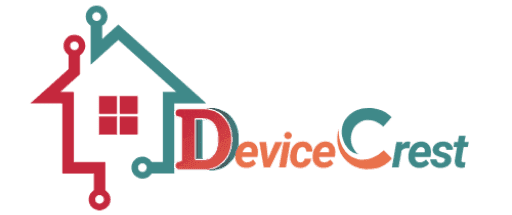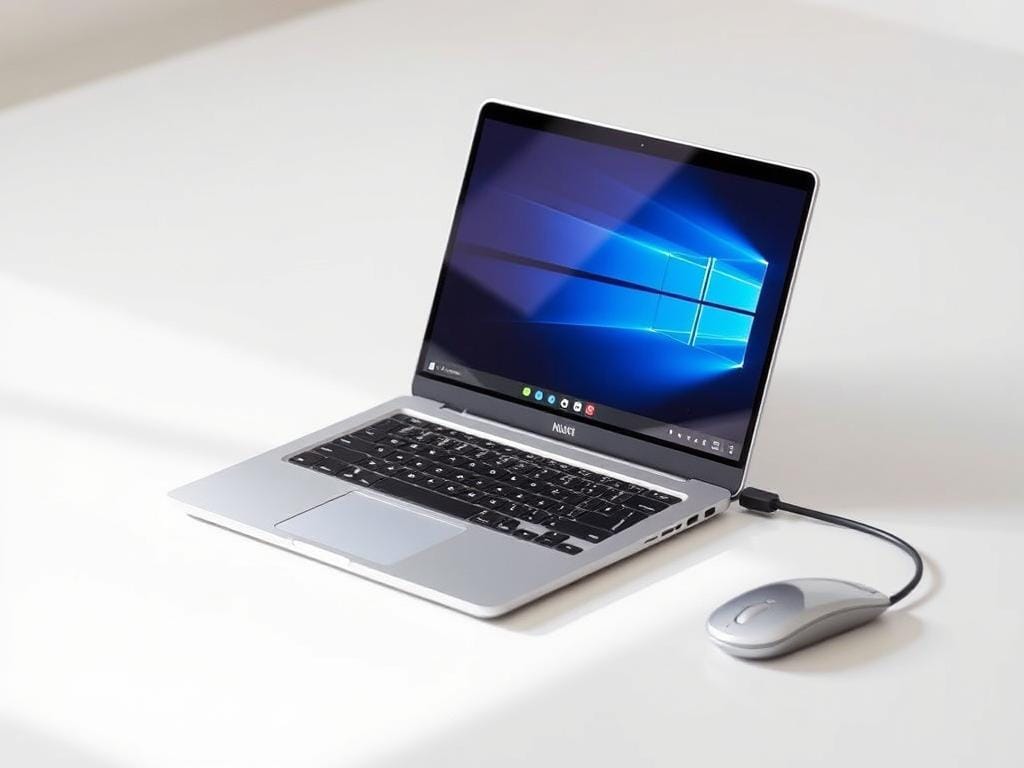Did you know 78% of professionals now choose ultra-portable laptops for work? Pocket-sized netbooks have changed how we use mobile devices. They’ve made a big impact on students, entrepreneurs, and tech fans.
These small computers are a big deal for those who need flexibility and power. The new 2024 models are tiny but pack a big punch.
Imagine having a strong computer that’s easy to carry. Ultra-portable laptops are now a smart choice for anyone who wants to move freely. They don’t have to give up on tech power.
Exploring pocket-sized netbooks opens up a world of new ideas. They bring together advanced tech and easy-to-carry designs. These devices are changing how we use digital tools, whether you’re a student or a remote worker.
Key Takeaways
- Ultra-portable laptops offer professional-grade performance in compact sizes
- Pocket-sized netbooks provide exceptional mobility for modern professionals
- Compact computing solutions are becoming increasingly powerful and efficient
- Mini laptops bridge the gap between smartphones and traditional computers
- Advanced technology enables high-performance computing in smaller form factors
Understanding the Evolution of Ultra-Portable Computing
The journey of portable computing has seen a huge change. From big machines to small ones that fit in a bag, it’s been a big leap.
The early days of mobile computing were filled with big steps. These steps led to today’s ultrabooks and tablet-laptop hybrids. Let’s look at the key moments that shaped our mobile workstations.
From Traditional Laptops to Compact Solutions
In the early 1980s, portable computers were not portable at all. The Osborne 1, from 1981, was 24 pounds and had a small 5-inch CRT monitor. Now, ultrabooks are under 3 pounds and way more powerful.
- Osborne 1 (1981): First mobile computer, 24 lbs
- Epson HX-20 (1981): First “notebook” computer, 6 lbs
- Grid Compass (1982): First clamshell laptop design
The Rise of Miniature Computing Devices
The late 1980s and early 2000s brought big changes in mobile computing. NEC UltraLite was very light, at just 4.4 pounds. This led to future mobile workstations that were both light and powerful.
| Year | Device | Key Innovation |
|---|---|---|
| 2007 | ASUS Eee PC 701 | First netbook category |
| 2008 | Apple MacBook Air | Thinnest laptop design |
| 2011 | First Chromebooks | Cloud-based computing |
Modern Demands for Portable Technology
Today, people want travel computers that are light, strong, and can do many things. Tablet-laptop hybrids are perfect, blending the ease of a tablet with the power of a laptop.
Key Features of Pocket-Sized Netbooks

Lightweight notebooks have changed how we work and play on the go. They are now a reality for both professionals and digital fans.
Portable PCs have evolved, giving users great flexibility in a small size. These tiny devices stand out with key features:
- Screen sizes ranging from 10 to 13 inches
- Ultralight design under 3 pounds
- Robust construction using aluminum and magnesium alloy
- 2-in-1 convertible options for enhanced versatility
These netbooks surprise many with their performance. They efficiently handle everyday tasks.
| Feature | Specification |
|---|---|
| Average Screen Size | 7-12 inches |
| Typical Weight | Under 3 pounds |
| Primary Use Cases | Web browsing, document editing, email |
| Battery Life | Extended compared to standard laptops |
“Compact doesn’t mean compromised – these tiny powerhouses prove that big performance comes in small packages.”
For students, remote workers, or travelers, lightweight notebooks are ideal. They offer portability and function at an affordable price. Their design fits a dynamic lifestyle perfectly.
Power and Performance in a Compact Form

The world of travel-friendly laptops has changed how we work on the go. Micro notebooks and handheld laptops now have amazing power in small sizes. They challenge what we thought was possible in computers.
Today’s miniature notebooks are true wonders. They offer strong performance without being too big. Thanks to new tech, they give us smooth computing experiences.
Processing Capabilities and Speed
Compact devices now have processors that match big laptops. Here are some key points:
- Intel Core i7 processors with up to 16GB RAM
- High-speed SSD storage options reaching 1TB
- Advanced AMD Ryzen AI processors with 12 cores
Battery Life and Energy Efficiency
Battery life in handheld laptops has gotten much better. Now, top models can last up to 10 hours. This means you can stay productive all day.
| Device | Battery Life | Weight |
|---|---|---|
| GPD Pocket 3 | 10 hours | 1.3 pounds |
| One Netbook OneGX1 Pro | 6 hours | 1.1 pounds |
| Microsoft Surface Go 3 | 10 hours | 1.2 pounds |
Connectivity Options and Ports
Modern travel-friendly laptops have many ways to connect. They usually have:
- USB 4 ports
- HDMI 2.1 connections
- Optional 4G LTE connectivity
- High-speed charging capabilities
These small notebooks show that great power can fit in tiny spaces. They let professionals work well from anywhere.
Portable Computing Solutions for Professionals

Today, professionals need their devices to be super flexible. On-the-go computing has changed how we work. Tiny PCs and mini notebooks are key for mobile workers in many fields.
Now, travel-friendly devices offer strong solutions like big laptops. The modern worker wants tech that’s small but powerful. Pocket-sized netbooks are perfect for being both portable and productive.
- Seamless connectivity for remote work environments
- Lightweight design supporting constant mobility
- Advanced processing capabilities in minimal form factors
- Cloud integration for instant access to critical documents
Professional-grade mini notebooks now have features of full-sized computers. They offer:
- Instant boot technologies
- High-speed wireless networking
- Robust security protocols
- Extended battery performance
If you’re a consultant, freelancer, or corporate worker, these small computers are great. They help you stay productive anywhere. The shift to on-the-go computing lets professionals work well from anywhere, breaking down old work boundaries.
Design and Ergonomics of Mini Laptops

Portable productivity has changed how we work and play. Lightweight computing devices are key for today’s professionals. Mini laptops are a top example of compact design, blending function with portability.
Creating small computing devices is more than just making laptops smaller. Makers have come up with smart ways to improve user experience in tiny sizes.
Screen Size and Display Quality
Even though they’re small, modern netbooks offer great visuals. Key display features include:
- 8-inch displays with high-resolution 1920 x 1200 screens
- Dense pixel configurations reaching 248 PPI
- Support for 10-point multitouch input
- 180-degree hinges enabling flexible viewing modes
Keyboard and Input Methods
New ways to interact with these devices have been developed. Makers have come up with:
- QWERTY chiclet-style backlit keyboards
- Precision touchpads with gesture support
- Pen and touch input compatibility
- Modular port systems for enhanced connectivity
Build Quality and Durability
These devices must handle daily use. Advanced mini laptops now have:
- Aluminum unibody chassis for structural integrity
- Lightweight materials under 725 grams
- Compact dimensions of 198 x 137 x 20mm
- Enhanced security features like fingerprint readers
These design innovations show how we can have portable productivity without losing performance or comfort.
Maximizing Productivity with Travel-Friendly Devices
Today’s professionals need devices that are both flexible and powerful. Pocket-sized netbooks have changed how we work. They turn small devices into tools that boost productivity anywhere.
Being productive with mini laptops means using smart tech:
- Leverage cloud storage services for seamless file access
- Install lightweight productivity apps optimized for compact devices
- Use wireless charging solutions like the RedMagic Go Power Bank for rapid device charging
- Implement digital organization tools designed for ultra-portable laptops
Mobile professionals rely on new tech. The UnifyDrive UP6 offers 48TB storage, giving remote workers easy access to data. The STM ChargeTree Go makes managing devices easy with 3-in-1 wireless charging.
Compact computing isn’t just about size—it’s about maximizing efficiency in every square inch of technology.
Choosing the right netbook is key. Look for devices with strong performance, long battery life, and good connectivity. This ensures your work keeps going without a hitch.
Comparing Top Pocket-Sized Netbooks in the Market
The world of travel computers has changed a lot. Now, we have ultrabooks and tablet-laptop hybrids that are both small and powerful. We’ve looked at the best ones to help you choose the right one for you.
Price Range and Value Proposition
Now, pocket-sized netbooks offer great value at different prices. Our study shows many options for every budget and need:
- Budget-friendly models start at $599
- Mid-range ultrabooks cost between $799-$1,200
- High-end mobile workstations can go up to $2,500
Performance Benchmarks
| Model | PassMark Score | Battery Life | Weight |
|---|---|---|---|
| Asus Zenbook 14 OLED Touch | 34,500 | 19.56 hours | 2.82 lbs |
| Lenovo Yoga 9i 14 Gen 9 | 35,200 | 17.52 hours | 2.98 lbs |
| Acer Swift Go 14 | 33,800 | 15.40 hours | 2.76 lbs |
| Lenovo ThinkPad T14s Gen 6 | 36,100 | 33.33 hours | 2.72 lbs |
User Reviews and Ratings
The top-rated tablet-laptop hybrids are known for:
- Exceptional build quality
- Long battery life
- Many connectivity options
- Lightweight design
People love these small mobile workstations for their top-notch performance and portability.
Security Features and Data Protection
Keeping lightweight notebooks and compact computers safe is key today. We need strong protection for our portable PCs against new cyber threats.
Today’s portable devices come with top-notch security features. These help keep our data safe. People who work on the go can use many ways to keep their data private.
- Biometric Authentication
- Fingerprint recognition
- Facial scanning technologies
- Advanced iris detection
- Encryption Technologies
- Full-disk encryption
- File-level protection
- Secure data transmission protocols
Experts say we should use all kinds of protection for our lightweight notebooks. Windows Defender and BitLocker Encryption are very important for keeping our data safe.
| Security Feature | Protection Level | Recommended Usage |
|---|---|---|
| Biometric Lock | High | Personal & Business Devices |
| Disk Encryption | Very High | Sensitive Data Handling |
| Firewall Protection | Medium | Network Security |
By focusing on security, we can keep our data safe while working on the go.
Conclusion
Travel-friendly laptops have changed how we work and use technology. Micro notebooks like the GPD Pocket 4 show how small laptops can be powerful. They prove that size doesn’t limit computing power.
The world of portable computing has made huge strides. Now, we have laptops with AMD Ryzen 9 processors and up to 64GB RAM. They are small enough to fit in a bag but powerful enough for work and school.
These small computers are getting better with each update. They offer a great mix of size and power. They are perfect for anyone who needs a reliable device on the move.
Looking into these devices shows how they can change our lives. They make it easier to work, learn, and create anywhere. The future of mobile computing looks very exciting.
Unlock the Future Today with the Revolutionary IGlass Concept!
Are you ready to experience a game-changing innovation that will transform the way you see the world? The groundbreaking IGlass concept is here, and it’s designed for those who crave cutting-edge technology and unparalleled convenience. Don’t miss your chance to be among the first to embrace this exciting advancement!
Dive into our blog article now and discover how IGlass can elevate your everyday life.
But hurry—this exclusive insight is only available for a limited time! Click here to learn more and unlock your future with IGlass!



1 thought on “Pocket-Sized Netbooks: Unlock Portable Power for Your Day”